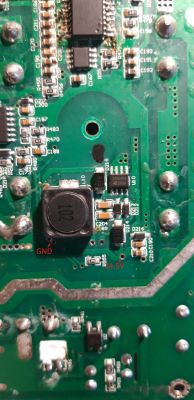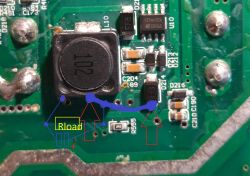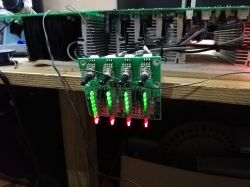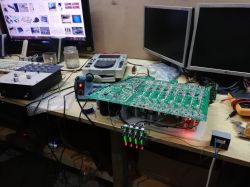Hmmm ... If only without starting the main power supply, just apply the voltage of the control systems supplied with the best laboratory power supply with the PROTECT function.
At the beginning, set the voltage on it, e.g. 5V and the cut-off current of 300mA to 500mA. Apply the mass to the point behind the D215 diode, and the plus after the D214 diode. I have marked in the picture how to make the connection.
And when the power supply would turn off due to overcurrent protection, it could mean that, for example, SG3525A or the drivers were blown.
Check the D214 diode beforehand, because if it was punctured, it would constitute a short circuit in the circuit.
Alternatively, you can use a power supply without this protection for the test and view the current with an ammeter plugged into the circuit.
What do you think about it? Otherwise, to check the buck converter itself, you would have to disconnect the load from it.
Edit:
Of course, to the anodes of these diodes.
Do you have the option to perform this test or look for other solutions? Because another solution is to desolder the SG3525A and IR2110s and then start the amplifier and it will come out whether the converter itself (Viper22a) will start or not.
Or...
If it weren't for SMD, the D214 diode's anode could be desoldered as well as the 102 foot of the coil. Both "pads" of both elements are on one output path (marked in the second photo). Short the soldered pins together in the air (with some wire) and add a balancing resistor to the ground of any value in the range from 300? to 1k?. This test will show more or less whether the converter itself is operational. The LED will not light because you will cut off the power to other systems. The voltage of the inverter will be put on the resistor and you only need to check if there is around 15V (on this resistor).
And that I would be forgotten. You also need to connect the 220uF electrolytic capacitor at the output, so you can connect it in parallel with the resistor. Pay attention to the polarity.
I would like to add that without an oscilloscope it will be difficult to go through the next stages ...


 although there are examples of these amplifiers that work without any reservations, unfortunately I do not know anyone who would have it, if only for comparison. I replaced the SG3525A and IR2110s again, the LED on the motherboard does not go out as before, it is on all the time. However, neither the relay nor the LEDs on the front panel turn on. As if the electricity was not going anywhere else.
although there are examples of these amplifiers that work without any reservations, unfortunately I do not know anyone who would have it, if only for comparison. I replaced the SG3525A and IR2110s again, the LED on the motherboard does not go out as before, it is on all the time. However, neither the relay nor the LEDs on the front panel turn on. As if the electricity was not going anywhere else.









